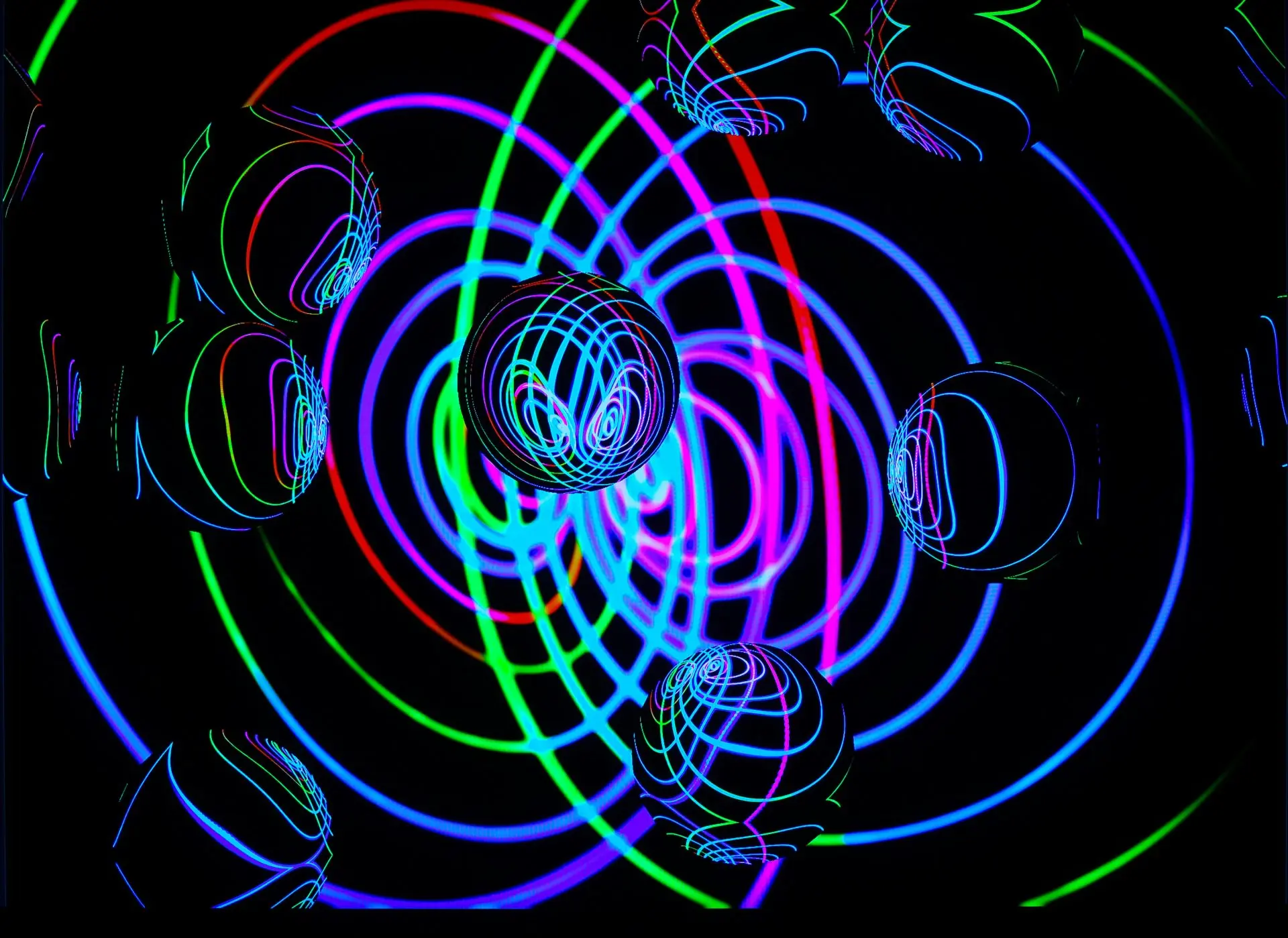How to Practice Grounding Techniques

Looking for more amazing products? Check out our online store and explore our collection here! Happy shopping!
Before diving in, please note: This post is for informational purposes only. If you’d like to know more about how we approach topics, feel free to check out our friendly Disclaimer Page.
Hey there, amazing readers! 
We’re committed to delivering quality posts, and your support (even just sticking around despite the ads) means everything to us. So, bear with us, and thanks for helping us keep the good vibes rolling. Now, on to the fun stuff!
TRANSLATE BUTTON AT THE END OF THE ARTICLE
A Quick Overview
Grounding techniques are methods used to help individuals stay connected to the present moment and manage overwhelming emotions or thoughts.
These techniques are commonly used in various therapeutic approaches to help individuals cope with anxiety, stress, PTSD, and other mental health issues.
By focusing on the physical sensations of the body or the environment around them, individuals can bring themselves back to a calmer state of mind.
Practicing grounding techniques regularly can improve emotional regulation, reduce anxiety, and increase overall well-being.
What are Grounding Techniques?
Grounding techniques are tools that help individuals center themselves in the present moment.
These techniques work by redirecting attention away from negative or distressing thoughts and emotions towards the physical sensations of the body or the environment.
By engaging the senses, individuals can anchor themselves in reality and create a sense of safety and stability.
Grounding techniques can vary from simple exercises like deep breathing to more complex practices like mindfulness meditation and guided imagery.
Benefits of Grounding
Practicing grounding techniques offers a range of benefits for mental and emotional well-being.
Some of the benefits of grounding include:
Reducing Anxiety: Grounding techniques can help individuals manage anxiety by bringing their focus back to the present moment.
Improving Emotional Regulation: Grounding techniques can assist in regulating emotions and preventing overwhelming feelings.
Enhancing Mindfulness: Grounding encourages mindfulness, which can lead to greater self-awareness and presence.
Stress Reduction: By practicing grounding techniques, individuals can lower stress levels and promote relaxation.
Coping with Trauma: Grounding techniques are often used in trauma therapy to help individuals feel safe and grounded during distressing moments.
When to Practice Grounding
It is beneficial to practice grounding techniques whenever you feel overwhelmed, anxious, or disconnected.
Some situations where grounding techniques can be particularly helpful include:
During Panic Attacks: Grounding techniques can help individuals regain control during a panic attack by redirecting their focus.
Before Stressful Situations: Practicing grounding techniques before a stressful event can help calm nerves and improve performance.
When Feeling Dissociated: Grounding techniques can bring individuals back to reality when they feel disconnected from their surroundings.
After a Traumatic Experience: Grounding techniques can assist in coping with the aftermath of a traumatic event by creating a sense of safety and stability.
Simple Grounding Exercises
There are several simple grounding exercises that can be easily incorporated into daily routines.
Some examples of simple grounding exercises include:
5-4-3-2-1 Technique: Name five things you can see, four things you can touch, three things you can hear, two things you can smell, and one thing you can taste.
Square Breathing: Inhale for four counts, hold for four counts, exhale for four counts, and pause for four counts.
Repeat this pattern.
Grounding Object: Carry a small object with you that you can touch and focus on when you feel the need to ground yourself.
Body Scan: Close your eyes and focus on each part of your body, starting from your toes and working your way up to your head.
Grounding Affirmations: Repeat affirmations to yourself that remind you of the present moment and your strength.
Deep Breathing Techniques
Deep breathing is a fundamental grounding technique that helps calm the mind and body.
Explore the Path to Spirituality and Enlightenment – Start Here.
By focusing on the breath, individuals can slow down racing thoughts and reduce feelings of anxiety.
Some deep breathing techniques to try include:
Diaphragmatic Breathing: Place one hand on your chest and the other on your stomach.
Inhale deeply through your nose, allowing your stomach to rise.
Exhale slowly through your mouth, feeling your stomach fall.
4-7-8 Breathing: Inhale for a count of four, hold for a count of seven, and exhale for a count of eight.
Repeat this cycle several times.
Equal Breathing: Inhale for a count of four, then exhale for a count of four.
Try to make your inhales and exhales the same length.
Mindfulness Meditation
Mindfulness meditation is a powerful grounding technique that involves focusing on the present moment without judgment.
By practicing mindfulness meditation, individuals can cultivate awareness of their thoughts and emotions.
Some tips for mindfulness meditation include:
Find a Quiet Space: Choose a quiet and comfortable space where you can sit or lie down without distractions.
Focus on the Breath: Pay attention to your breath as it moves in and out of your body.
Notice the sensation of each inhale and exhale.
Acknowledge Thoughts: When thoughts arise, acknowledge them without judgment and gently bring your focus back to your breath.
Start Small: Begin with short meditation sessions, gradually increasing the length as you become more comfortable with the practice.
Progressive Muscle Relaxation
Progressive muscle relaxation is a grounding technique that involves tensing and then relaxing different muscle groups in the body.
This technique helps individuals release physical tension and promote relaxation.
To practice progressive muscle relaxation:
Start with Your Feet: Curl your toes tightly for a few seconds, then release and relax.
Move on to your calves, thighs, and so on, working your way up the body.
Focus on Sensations: Pay attention to the difference between tension and relaxation in each muscle group.
Breathe Deeply: Remember to breathe deeply throughout the practice to enhance relaxation.
Release Tension: Let go of any thoughts or worries as you focus on relaxing each muscle group.
Guided Imagery
Guided imagery is a grounding technique that involves visualizing calming and soothing scenes to help reduce stress and anxiety.
By engaging the imagination, individuals can create a sense of peace and relaxation.
To practice guided imagery:
Choose a Peaceful Scene: Close your eyes and imagine a place that brings you comfort, such as a beach, forest, or meadow.
Engage the Senses: Visualize the sights, sounds, smells, and textures of your chosen scene in vivid detail.
Stay Present: Focus on the present moment in your visualization, letting go of any distractions or worries.
Practice Regularly: Incorporate guided imagery into your daily routine to build a sense of calm and relaxation.
Nature Connection
Connecting with nature is a powerful grounding technique that can help individuals feel more centered and at peace.
Spending time outdoors and immersing yourself in natural surroundings can reduce stress and promote well-being.
Some ways to connect with nature include:
Go for a Walk: Take a leisurely walk in a park, forest, or garden to reconnect with the natural world.
Gardening: Planting and tending to a garden can be a therapeutic way to nurture a connection with nature.
Outdoor Meditation: Practice mindfulness meditation outdoors, focusing on the sights, sounds, and sensations of nature.
Nature Sounds: Listen to recordings of nature sounds like birdsong, ocean waves, or rustling leaves to bring the outdoors inside.
Sensory Grounding
Sensory grounding involves using the five senses to anchor yourself in the present moment.
By engaging with your senses, you can create a sense of safety and connection to the world around you.
Some sensory grounding techniques to try include:
Sight: Focus on specific objects in your environment, noticing their colors, shapes, and textures.
Sound: Listen to soothing music, nature sounds, or the sounds of your surroundings to ground yourself.
Touch: Hold onto a grounding object like a smooth stone or textured fabric to connect with the sense of touch.
Taste: Eat a small piece of food mindfully, focusing on the flavors and textures in your mouth.
Smell: Use essential oils, scented candles, or fresh flowers to engage your sense of smell and create a calming atmosphere.
Grounding Through Movement
Movement-based grounding techniques involve using physical activity to center yourself in the present moment.
Moving your body can help release tension, reduce stress, and promote relaxation.
Some grounding exercises involving movement include:
Yoga: Practice yoga poses that focus on linking breath with movement to cultivate mindfulness and relaxation.
Dance: Put on your favorite music and allow yourself to move freely, focusing on the sensations in your body.
Walking: Take a mindful walk, paying attention to each step and the sensations in your feet as they touch the ground.
Stretching: Perform gentle stretches to release physical tension and promote a sense of well-being.
Incorporating Grounding into Daily Routine
To make grounding techniques a regular part of your daily routine, consider the following tips:
Set Reminders: Use alarms or notifications on your phone to remind you to practice grounding throughout the day.
Create a Grounding Toolkit: Keep a collection of grounding exercises that work for you, such as deep breathing techniques, mindfulness practices, and sensory activities.
Practice Gratitude: Incorporate gratitude practices into your routine to cultivate a positive mindset and enhance grounding.
Integrate Grounding into Activities: Use grounding techniques during activities like driving, working, or socializing to stay present and reduce stress.
Be Gentle with Yourself: Remember that grounding takes practice, and it’s okay to have off days.
Approach grounding with kindness and patience.
Conclusion
Grounding techniques are valuable tools for managing stress, anxiety, and overwhelming emotions.
By incorporating grounding exercises into your daily routine, you can cultivate mindfulness, reduce tension, and improve emotional regulation.
From deep breathing techniques to nature connection and sensory grounding, there are numerous ways to practice grounding and stay connected to the present moment.
Experiment with different techniques to find what works best for you, and remember that consistency is key in reaping the benefits of grounding.
Start incorporating grounding into your daily life today and experience the positive impact it can have on your overall well-being.

The Enlightenment Journey is a remarkable collection of writings authored by a distinguished group of experts in the fields of spirituality, new age, and esoteric knowledge.
This anthology features a diverse assembly of well-experienced authors who bring their profound insights and credible perspectives to the forefront.
Each contributor possesses a wealth of knowledge and wisdom, making them authorities in their respective domains.
Together, they offer readers a transformative journey into the realms of spiritual growth, self-discovery, and esoteric enlightenment.
The Enlightenment Journey is a testament to the collective expertise of these luminaries, providing readers with a rich tapestry of ideas and information to illuminate their spiritual path.
Our Diverse Expertise
While our primary focus is on spirituality and esotericism, we are equally passionate about exploring a wide range of other topics and niches 

To ensure we provide the most accurate and valuable insights, we collaborate with trusted experts in their respective domains 
Our blog originally focused on spirituality and metaphysics, but we’ve since expanded to cover a wide range of niches. Don’t worry—we continue to publish a lot of articles on spirituality! Frequently visit our blog to explore our diverse content and stay tuned for more insightful reads.
Hey there, amazing reader! 
Check out our store here and take a peek at some of our featured products below! Thanks for being awesome!













